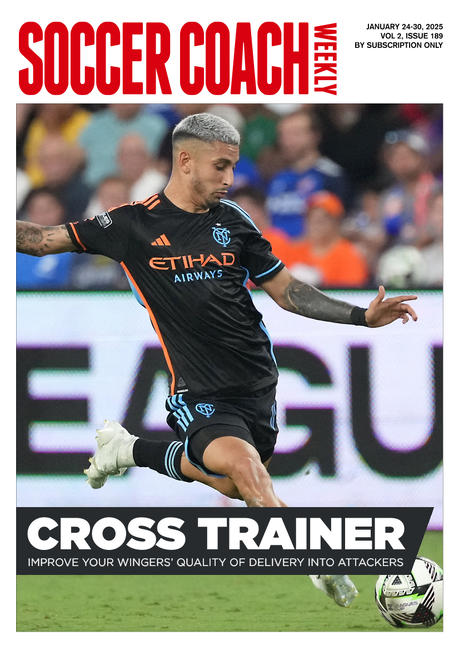5 signs that players do enjoy training
If your youngsters are having fun in your sessions, that is really half the battle won. Here are some of the tell-tale indicators that they are relishing practice...
We all know that the vast majority of players prefer matches to practice.
But for your group of individuals to become a well-oiled machine on gameday, then some productive time on the training field is a must.
And among the keys to getting the best out of players in practice is buy-in and positive responses.
Here are five indicators that your players are enjoying your sessions...
01 - THEY KEEP COMING BACK
Absence is the biggest indicator that players are not enjoying training and that it might be time for a change.
If players don’t turn up, ask why when you next see them, and reinforce the fact that their team-mates need them back.
Don’t be too pushy though - this puts a lot of young players off and you might lose them for good.
02 - THEY BUY INTO THE TEAM AND FEEL PART OF IT
Always look out for players who are at the periphery of the squad. Often they will be doing their own thing while the others are enjoying themselves before or after training, so make an extra effort to include them in everything you do.
Always pick teams yourself rather than letting players do it. This gives you an opportunity to split up cliques and integrate everyone.
With that in mind, encourage players to buy into the team by wearing the club’s kit to training and games. It’s the little things that really work in terms of bonding a team together.
Players will always be drawn to their friends, but if you can draw the whole team into liking and respecting you, then you have the complete unit.
03 - they are well behaved at Training
Poor behaviour is a good indicator that players are not enjoying training. If your kids are always productively engaged and challenged then there is no time or energy left over to misbehave.
Excessive downtime, repetitive exercises or moves that are too challenging will provoke boredom, or worse, frustration.
04 - THEY smile and laugh at Training
A smile is an important indicator that your players are having fun and enjoying training.
Remember, it Is not school - so you can relax and have a few jokes with them, too. That said, a lot of youngsters can be quite insecure, so it’s always best to start by poking fun at yourself or a fellow coach to show that there is no harm intended.
05 - They feel safe Talking and asking quesTions
In a young player’s mind, a fun environment is a safe environment. If they are happy, they are far more likely to take risks - and asking questions in front of their peers can be seen by them as a risk. Consider the times you’ve been in a group and someone has asked ’any questions?’, only to be met with shy silence.
Make sure you are approachable at all times. You can start your answers with, “That’s an excellent question, I’m sure other people are thinking the same thing”. This sets the player’s mind at rest and lets everyone know that anything they ask will be taken seriously.
Related Files
Newsletter Sign Up
Coaches Testimonials

Gerald Kearney, Downtown Las Vegas Soccer Club

Paul Butler, Florida, USA

Rick Shields, Springboro, USA

Tony Green, Pierrefonds Titans, Quebec, Canada
Subscribe Today
Discover the simple way to become a more effective, more successful soccer coach
In a recent survey 89% of subscribers said Soccer Coach Weekly makes them more confident, 91% said Soccer Coach Weekly makes them a more effective coach and 93% said Soccer Coach Weekly makes them more inspired.
*includes 3 coaching manuals
Get Weekly Inspiration
All the latest techniques and approaches
Soccer Coach Weekly offers proven and easy to use soccer drills, coaching sessions, practice plans, small-sided games, warm-ups, training tips and advice.
We've been at the cutting edge of soccer coaching since we launched in 2007, creating resources for the grassroots youth coach, following best practice from around the world and insights from the professional game.



